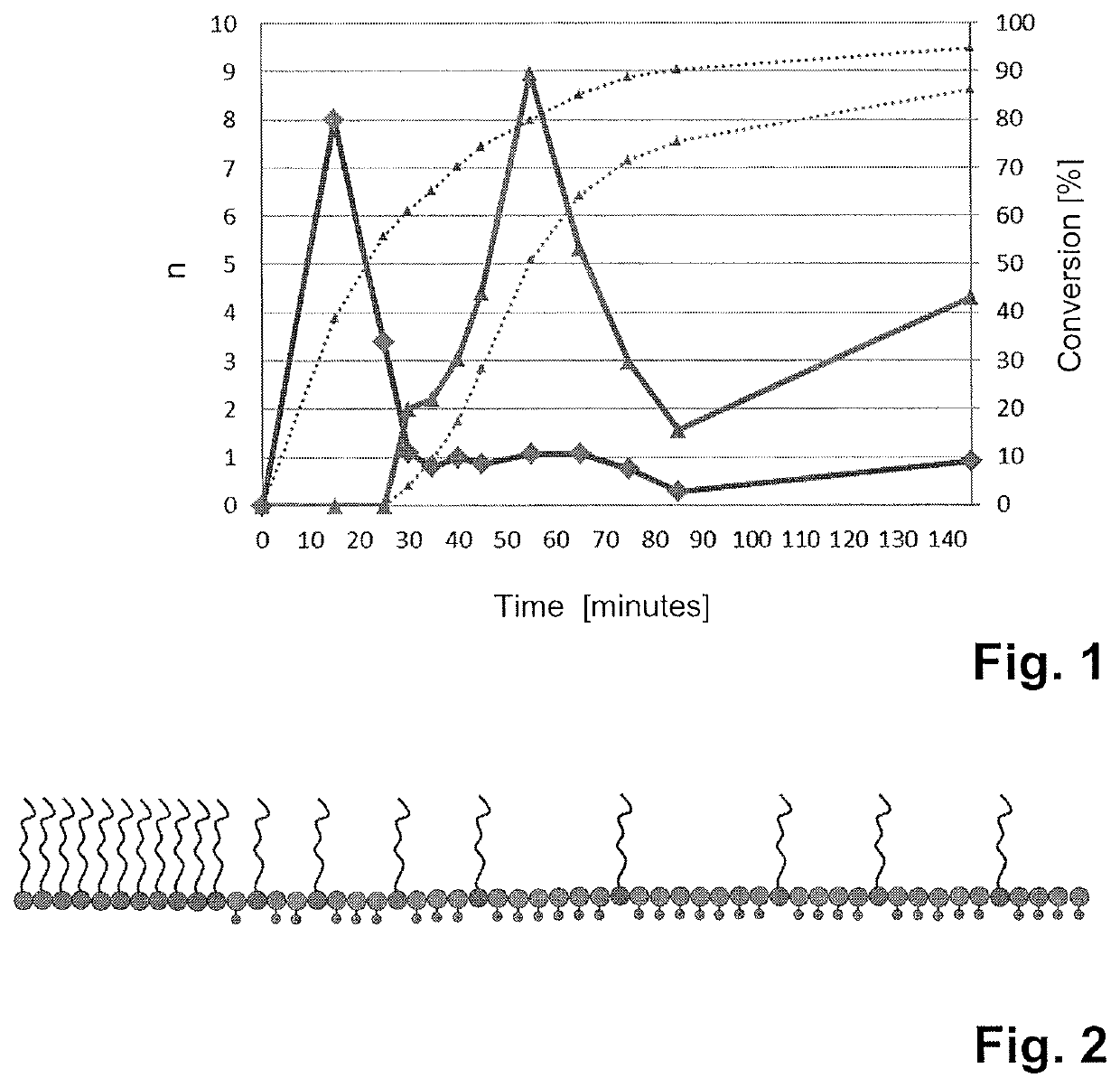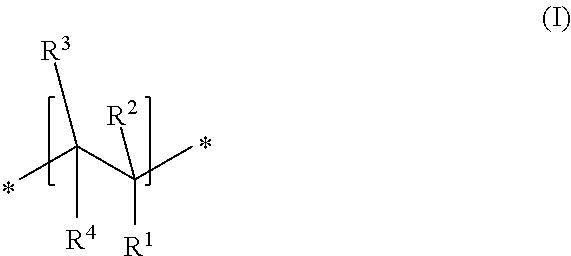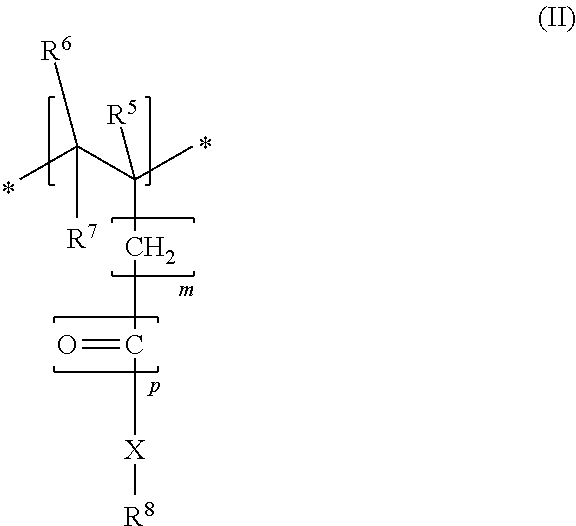Copolymers having a gradient structure
a gradient structure and copolymer technology, applied in the field of copolymer, can solve the problems of complicated application and high cost of such solutions, and achieve the effect of good working of mineral binder compositions and effective plasticization
- Summary
- Abstract
- Description
- Claims
- Application Information
AI Technical Summary
Benefits of technology
Problems solved by technology
Method used
Image
Examples
Embodiment Construction
[0165]1. Preparation Examples for Polymers
[0166]1.1 Reference Polymer R1 (Comparative Example, Block Copolymer)
[0167]For preparation of a block copolymer by means of RAFT polymerization, a round-bottom flask equipped with a reflux condenser, stirrer system, thermometer and a gas inlet tube is initially charged with 57.4 g of 50% methoxy polyethylene glycol 1000 methacrylate (0.03 mol) and 22 g of deionized water. The reaction mixture is heated to 80° C. with vigorous stirring. A gentle N2 inert gas stream is passed through the solution during the heating and over all the remaining reaction time. 378 mg of 4-cyano-4-(thiobenzoyl)pentanoic acid (1.35 mmol) are then added to the mixture. Once the substance has fully dissolved, 67 mg of AIBN (0.41 mmol) are added. From then on, the conversion is determined regularly by means of HPLC.
[0168]As soon as the conversion, based on methoxy polyethylene glycol methacrylate, is 90 mol %, 4.66 g of methacrylic acid (0.05 mol) are added. The mixtur...
PUM
| Property | Measurement | Unit |
|---|---|---|
| mol % | aaaaa | aaaaa |
| mol % | aaaaa | aaaaa |
| mol % | aaaaa | aaaaa |
Abstract
Description
Claims
Application Information
 Login to View More
Login to View More - R&D
- Intellectual Property
- Life Sciences
- Materials
- Tech Scout
- Unparalleled Data Quality
- Higher Quality Content
- 60% Fewer Hallucinations
Browse by: Latest US Patents, China's latest patents, Technical Efficacy Thesaurus, Application Domain, Technology Topic, Popular Technical Reports.
© 2025 PatSnap. All rights reserved.Legal|Privacy policy|Modern Slavery Act Transparency Statement|Sitemap|About US| Contact US: help@patsnap.com



